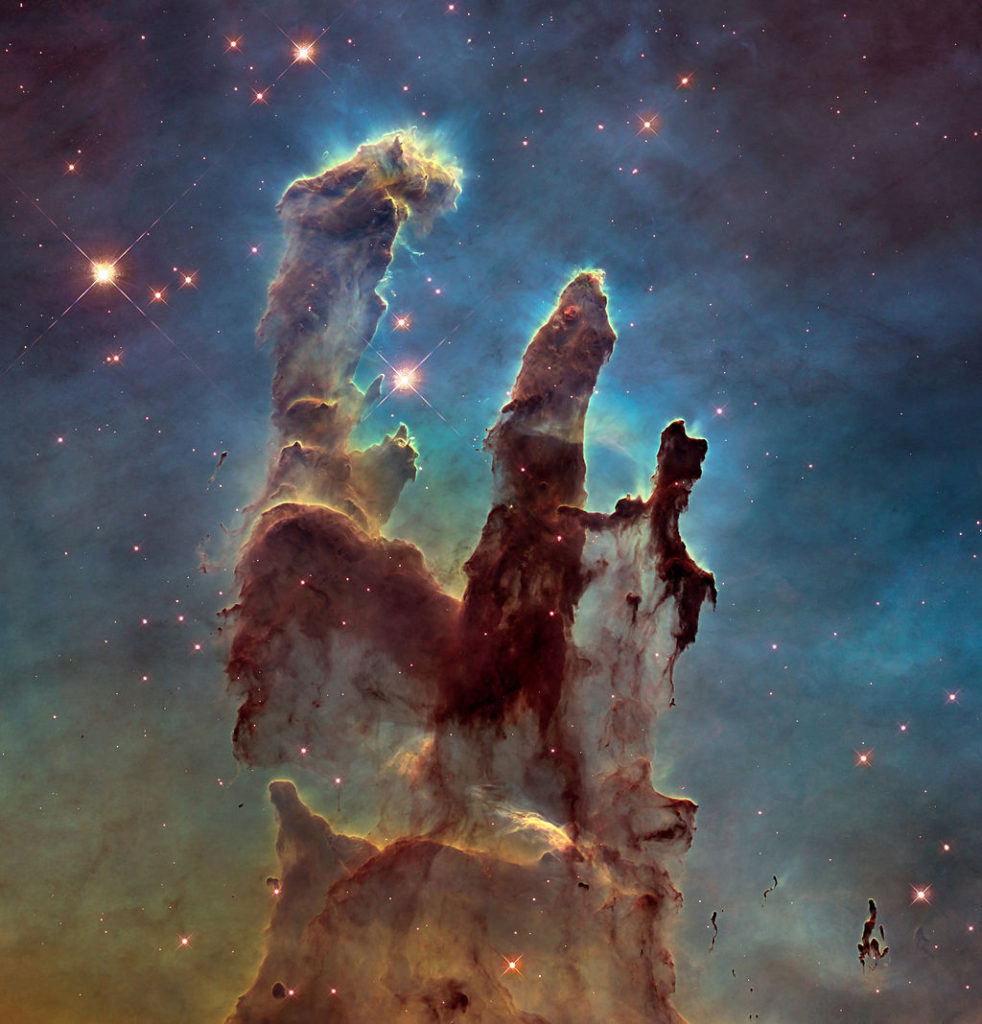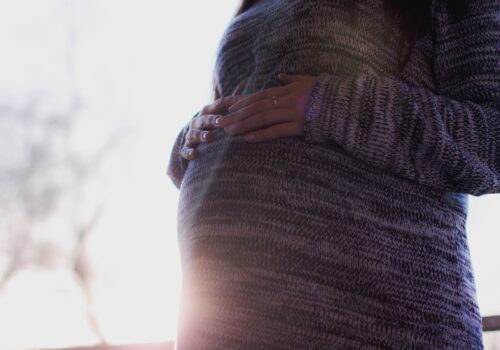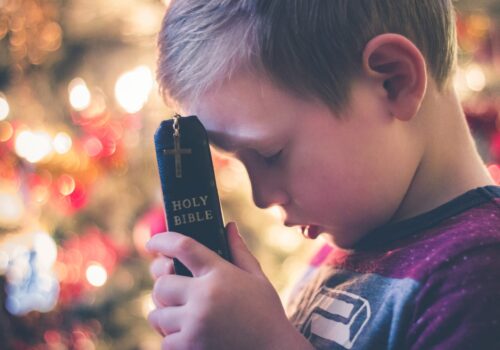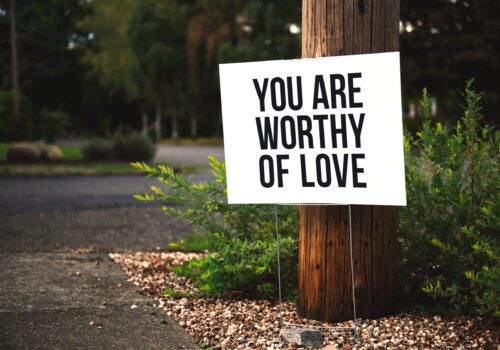Download PDF: Labrecque, Creationism of Another Kind
Editor’s note: This piece was first presented at a conference on religion and ecology at Emory University titled “The Sacred Mundane” on September 10 and 11, 2015. Practical Matters is pleased to feature some of the reflections from this conference program. The conference was presented by Emory University’s Center for Ethics and the Emory CREATE program.
- Cory Labrecque, Creationism of Another Kind
- Rebecca Copeland, How to Learn from the Lily
- Jonathan K. Crane, Arboreal Wisdom
Abstract
In his oft-cited paper on the historical roots of our ecologic crisis, Lynn White, Jr. points to religion (particularly Christianity in its Western form) as the major culprit. Following a brief review of this critique, I turn to a rendering of creation and the human-nature relationship from the Roman Catholic tradition, paying close attention to the value of corporeality (both human and non-human), the notion of body as place, and the emphasis on integration in the Church’s teaching.
Religion as Culprit
In his rather melancholic commentary on the character and trajectory of the American conservation movement in the 1940s, Aldo Leopold lamented that “in our attempt to make conservation easy, we have made it trivial.”[1] He pointed to a shallow ecology, at best, that was largely directed by economic renderings of what was considered valuable. This was certainly not helped by the Church (what Roderick Nash calls “the chief custodian of ethics”); Leopold was convinced that philosophy and religion had not even fathomed the inclusion of nature in conversations about the moral community.[2]
Enter Lynn Townsend White, Jr., a professor of medieval history at Princeton, Stanford, and—for just about thirty years—the University of California, Los Angeles. When he took to the stage to deliver a talk on the historical roots of our ecologic crisis at a meeting of the American Association for the Advancement of Science in December of 1966, it is almost a sure thing that he did not know that his words would stir a long-lasting debate. To be sure, he did not simply bring to the fore a discussion of the blindness—if not, all-out resistance—of the Western religious traditions to environmental ethics.[3] Some say that he gave impetus to the contemporary study of religion and ecology as a serious academic discipline in its own right.
In his address—published a few months later in the journal Science[4] of all places—White makes plain that “we continue today [he was speaking in the late 1960s] to live very largely in a context of Christian axioms” which are not all that eco-friendly.[5] Christianity, he famously argues, “is the most anthropocentric religion the world has seen”[6] and it has inherited from Judaism, at least in part, a problematic rendering of the human-nature relationship. Among other things, White laments its perception of time as non-repetitive and linear that is in striking contrast to nature’s cyclicity. He highlights Christian emphasis on the particular “otherness” of humankind—alone in all of creation made in the image and likeness of God and sharing in the Deity’s transcendence—as setting us on high, as it were, above the created order. In many ways, this kind of thinking, White contends, allowed for a valuation of nature based almost exclusively on how well it served human purposes. In addition, throwing out animistic tendencies to vest living and non-living constituents of the natural world with spirit, Christianity “made it possible to exploit nature in a mood of indifference to the feelings of natural objects.”[7]
And before one should point the finger at science and technology for the mess that we now find ourselves in, White reminds that “human ecology is deeply conditioned by beliefs about our nature and destiny—that is, by religion.”[8] Both science and technology, steeped in Christian culture, drew from it a notion of perpetual progress that encouraged mastery and control. This led to an interpretation of human dominion over the natural world as despotism (White contends) that is indefensible apart from Judeo-Christian teleology.[9] “Modern science,” White says, “is an extrapolation of natural theology” and modern technology is “at least partly to be explained as a voluntarist realization of the Christian dogma of [human] transcendence of, and rightful mastery over, nature.”[10] Accordingly, Christianity “bears a huge burden of guilt.”[11]
If Christians were dormant, if not indifferent, up until this point when it came to concerns about the environment, they were certainly now being roused by the likes of White’s critique; indeed, not a few were disgruntled by his piercing charges. In some Christian circles, the historian was called “a junior Anti-Christ, probably in the Kremlin’s pay, bent on destroying the true faith.”[12]
Religion as Resource: The Catholic Church’s Catechesis on Creation
In spite of his critical evaluation, White did not advocate an abandonment of religion altogether. His take-home point (although sometimes overlooked in the fury of counter-accusations) was not to forsake religion as a destructive anachronism of our day nor to employ more science and more technology in order to get us out of the present eco-crisis.[13] “Since the roots of our trouble are so largely religious,” White declared, “the remedy must also be essentially religious, whether we call it that or not.”[14]
White turned, explicitly, to the model of Saint Francis of Assisi—styling him as the “the greatest radical in Christian history since Christ”[15]—whose humility grasped a much more extensive notion of what (or whom, rather) constitutes community. Proposing Francis as patron of ecologists, White lauded the saint’s attempt “to depose [humankind] from … monarchy over creation and set up a democracy of all God’s creatures. With him the ant is no longer simply a homily for the lazy, flames a sign of the thrust of the soul toward union with God; now they are Brother Ant and Sister Fire, praising the Creator in their own ways” as Brother and Sister Humans do in theirs.[16]
Incidentally, just over a decade later, Pope John Paul II would officially proclaim Saint Francis as the “heavenly patron of those who promote ecology,”[17] claiming that he:
offers Christians an example of genuine and deep respect for the integrity of creation. As a friend of the poor who was loved by God’s creatures, Saint Francis invited all of creation—animals, plants, natural forces, even Brother Sun and Sister Moon—to give honor and praise to the Lord. The poor man of Assisi gives us striking witness that when we are at peace with God we are better able to devote ourselves to building up that peace with all creation which is inseparable from peace among all peoples.[18]
The Catholic Church’s teaching on Creation is almost always the starting point of its catechesis. The tradition espouses a Creationism of the kind that confesses the unaided, innovative, ordered, and freely-willed hand of God in giving a beginning to all that existed outside of the Deity, and concentrates on the meaning of our origins and ends.[19] I say “of the kind” because “Creationism” insinuates, for some, a dismissal or outright denial of what has been learned by the sciences. Take, for instance, the definition given for the term by Merriam-Webster: “the belief that God created all things out of nothing as described in the Bible and that therefore the theory of evolution is incorrect.”[20]
The Catholic Church denies this implicit causality and appreciates—though this has come about gradually if not painstakingly—that the sciences can inspire greater awe for God. The understanding is that, as Creator, God leaves his mark in creation in order to be known—through the light of reason—by humankind.[21] Pope Paul VI’s 1965 pastoral constitution on the Catholic Church in the modern world (called Gaudium et Spes) confirmed a belief already made plain by his predecessors: “if methodical investigation within every branch of learning is carried out in a genuinely scientific manner and in accord with moral norms, it never truly conflicts with faith, for earthly matters and the concerns of faith derive from the same God.”[22] In light of this, Pope Benedict XVI spoke about creation and evolution as “two complementary—rather than mutually exclusive—realities”[23] and Pope Francis, in a plenary session of the Pontifical Academy of Sciences in 2014, brought this point to light:
You are addressing the highly complex subject of the evolution of the concept of nature. I will not go into the scientific complexity, which you well understand, of this important and crucial question. I only want to underline that God and Christ are walking with us and are also present in nature, as the Apostle Paul stated in his discourse at the Areopagus: “In him we live and move and have our being” (Acts 17:28). When we read the account of Creation in Genesis we risk imagining that God was a magician, complete with an all powerful magic wand. But that was not so. He created beings and he let them develop according to the internal laws with which He endowed each one, that they might develop, and reach their fullness. He gave autonomy to the beings of the universe at the same time in which He assured them of his continual presence, giving life to every reality. And thus Creation has been progressing for centuries and centuries, millennia and millennia, until becoming as we know it today, precisely because God is not a demiurge or a magician, but the Creator who gives life to all beings. The beginning of the world was not a work of chaos that owes its origin to another, but derives directly from a supreme Principle who creates out of love. The Big Bang theory, which is proposed today as the origin of the world, does not contradict the intervention of a divine creator but depends on it. Evolution in nature does not conflict with the notion of Creation, because evolution presupposes the creation of beings who evolve.[24]
The Catholic tradition also teaches—grounded, for instance, in the book of Psalms[25]– that the reach of God’s compassion is over the whole of creation and is not limited to humanhood. To be sure, all of creation—collectively—is very good[26] and it is all—collectively—in statu viae; that is, the whole of creation is in “a state of journeying” toward an ultimate perfection yet to be attained and to which it has been destined.[27]
However, although the Catholic Church espouses a number of tenets that speak highly of the natural world, it would be misleading not to list those teachings of this tradition that do not. On the one hand, the Church claims that (1) Creation (which is good if not only by virtue of its Author) has inherent value, (2) each of the various creatures are said to be willed in their own being, (3) interdependence and solidarity are marks of the created order, and (4), God’s providence is over all existents and humans are called to imitate said providence through the mandate of stewardship.[28]
On the other hand, the Catholic Church also speaks of the hierarchy of beings, with humankind as the summit of the Creator’s work since it alone shares in the light of the divine mind[29] Furthermore, the destination of all material creatures for the good of the human race is underlined repeatedly.[30] Even though the Catholic Church emphasizes the interdependence of all beings in the universal order and recognizes the value of the natural world in its own right (that is, aside from human utility), it nevertheless rejects biocentric and ecocentric worldviews, arguing that these erroneously propose “that the ontological and axiological difference between [humans] and other living beings be eliminated, since the biosphere is considered a biotic unity of undifferentiated value. Thus [humanity’s] superior responsibility can be eliminated in favour of an egalitarian consideration of the ‘dignity’ of all living beings.”[31] And that, the Pontifical Council of Justice and Peace in its compendium on the Church’s social teaching, just cannot be. White was not, perhaps, entirely off the mark in his critique of Christianity, however sweeping it may have been.
This said, the dogmatic constitution of the First Vatican Council, Dei Filius, proclaims that the world is ultimately made for the glory of God[32] and not for humankind. The demand here is for a more theocentric, rather than anthropocentric, valuation of the natural world that takes its lead primarily from God’s own explicit pronouncement of Creation as “good” even before the advent of humans and “very good” in its comprehensiveness. The Catholic Church asserts that humans must not “make arbitrary use of the earth, subjecting it without restraint to [our] will, as though it did not have its own requisites and a prior God-given purpose, which [we] can indeed develop but must not betray.”[33] The struggle to balance instrumental and inherent value draws out an important practical question: what do we owe nature if it is, at once, a shared (but limited) resource for survivability and the treasured work of a Deity who has given it its own worth and purpose? At the very least, the Catholic Church has taught that at the heart of the eco-crisis lies an “anthropological error” that gives precedence to the idea that nature is something to be used and does little to consider God’s “original gift of the things that are.”[34]
Integral Corporeality and the Body as Place
Christianity writ large is replete with body language: from the Incarnation to the Sacraments to the Church as the Body of Christ, value is given to the physical.[35] “The Theology of the Body,” an extensive corpus of teaching on the subject by Pope John Paul II, underlines the goodness of the body and reminds that it cannot be reduced to mere matter nor mechanized. Further, the rendering of bodies as atomistic—that is, as disconnected from context and relationship—is not only suspicious, it can lead to irresponsibility. The human person—who is a body, rather than just having or experiencing the body[36]—as Pope John Paul II wrote, “belongs to the visible world; he is a body among bodies.”[37]
Thus, integral corporeality, as we might call it, speaks on one level to the human person as being composite and covenantal in nature. In a broader sense, though, integral corporeality points to a more profound sense of interconnection when it is situated in a vision of Creation as bodies in relationship.[38] As we have seen, the Catholic Church recognizes that these bodies—human and non-human—are characteristically interdependent; this is, in part, by virtue of their shared limitedness. In Laudato Si’, Pope Francis urges that recognizing bodies as such is “an essential element of any genuine human ecology.”[39]
Whereas some define the potential of the immortal soul as “the central locus of the human-God relationship and of God’s interaction with humans,”[40] the body, too—unified with the soul in the composite nature of personhood—is a locus or a place. Pope Francis reminds that Christians have not always been quick to appropriate the truth that “the life of the spirit is not dissociated from the body or from nature or from worldly realities, but lived in and with them, in communion with all that surrounds us.”[41] And, yet, this body as place motif is not unfamiliar to Christians. In his letter to the Church at Corinth, Saint Paul incites his reader with a metaphorical question: “do you not know that your body is a temple of the Holy Spirit within you, which you have from God, and that you are not your own?”[42] All of this suggests that it is in the material, in the body, that the human, God, and nature come together in deeply integrative ways.[43]
The American phenomenologist Edward Casey explains that “[t]o be in the world, to be situated at all, is to be in place” and that “[p]lace is the phenomenal particularization of being-in the world.”[44] Ultimately, he says, “just as there is no place without body—without the physical or psychical traces of body—so there is no body without place;”[45] it is the body that orients and disorients.[46] As the “vehicle of the here, its carrier or ‘bearer,’”[47] the “lived body energizes a place by its own idiosyncratic dynamism, intensifying that place’s own idiolocal character. If we were to begin to think in this direction, our understanding of place itself—place as lived and imagined and remembered—would gain by deepening.”[48] If we also render our understanding of bodies in this same way—that is, “as lived and imagined and remembered”—then axioms of nature-as-place and body-as-place converge, underlining the inseparability of nature and body as Casey urges us to consider. In a similar way, the Church professes that it is in the bodiliness of the human person that the sacramentality of creation is made manifest and through the bodiliness of the human person that holiness can come into the visible world. [49]
The appeal, relevance, and urgency of this kind of integral corporeality—of “integral ecology”—that underscores this binding of nature and body is brought to light by the Rev. Gerald Durley, pastor emeritus of Providence Missionary Baptist Church in Atlanta. Recently honored by the White House as a “Champion of Change”[50] for his efforts in elucidating climate change as a civil rights issue, Durley claims that:
We are seeing its impacts in our own communities in the form of record-breaking temperatures, floods, droughts, hurricanes, and the list goes on and on. When your children suffer from asthma and cannot go outside to play, as is the case for many in Atlanta, it is a civil rights issue. When unprecedented weather disasters devastate the poorest neighborhoods in places like New Orleans, New Jersey, and New York, it is a civil rights issue. When farmers […] cannot feed their families because the rains will no longer come, it is a civil rights issue.[51]
Even more, the evidence of poor environmental health in vulnerable communities that are disproportionately subjected to toxic air quality further emphasizes the importance of recognizing the bound realities of nature, body, and place, which together are threatened by the “throwaway culture” that Pope Francis has critiqued time and again.[52] The realization that each body (human and non-human) is actually “a body among bodies” means that rendering a body (human or non-human) as “disposable,” impoverished, or as an object of exclusion automatically renders all other bodies as negligible in the same way.[53]
Feature image by NASA, ESA, and the Hubble Heritage Team (STScI/AURA) [Public domain].
Read more from The Sacred Mundane Conference:
- Cory Labrecque, Creationism of Another Kind
- Rebecca Copeland, How to Learn from the Lily
- Jonathan K. Crane, Arboreal Wisdom
Notes
[1] Roderick Nash, “The Greening of Religion,” in This Sacred Earth: Religion, Nature, Environment, ed. Roger S. Gottlieb (New York: Routledge, 1996), 194.
[2] Nash, “Greening of Religion,” 194-195.
[3] Nash, “Greening of Religion,” 195.
[4] Lynn White, Jr., “The Historical Roots of Our Ecologic Crisis,” Science 155.3767 (1967): 1203-1207.
[5] White, “Historical Roots,” 1205.
[6] White, “Historical Roots,” 1205.
[7] White, “Historical Roots,” 1205.
[8] White, “Historical Roots,” 1205.
[9] White, “Historical Roots,” 1205.
[10] White, “Historical Roots,” 1206.
[11] White, “Historical Roots,” 1206.
[12] Nash, “The Greening of Religion,” 198.
[13] White, “Historical Roots,” 1206.
[14] White, “Historical Roots,” 1207.
[15] White, “Historical Roots,” 1206.
[16] White, “Historical Roots,” 1206.
[17] John Paul II, “S. Franciscus Assisiensis Caelestis Patronus Oecologiae Cultorum Eligitur,” Inter Sanctos, November 29, 1979, accessed September 3, 2015, http://w2.vatican.va/content/john-paul-ii/la/apost_letters/1979/ documents/hf_jp-ii_apl_19791129_inter-sanctos.html.
[18] John Paul II, “Peace with God the Creator, Peace with All of Creation,” World Day of Peace, January 1, 1990, accessed September 3, 2015, https://w2.vatican.va/content/john-paul-ii/en/messages/peace/documents/hf_jp-ii_mes_ 19891208_xxiii-world-day-for-peace.html, §16.
[19] Catechism of the Catholic Church, §282-290.
[20] Italics mine. See: http://beta.merriam-webster.com/dictionary/creationism.
[21] Catechism of the Catholic Church, §286.
[22] Paul VI, Gaudium et Spes, December 7, 1965, accessed September 5, 2015, http://www.vatican.va/archive/hist_ councils/ii_vatican_council/documents/vat-ii_const_19651207_gaudium-et-spes_en.html, §36.
[23] Joseph Ratzinger, “In the Beginning”: A Catholic Understanding of the Story of Creation and the Fall, trans. Boniface Ramsey (Huntington: Our Sunday Visitor, 1990) , 50.
[24] Francis, “Plenary Session of the Pontifical Academy of Sciences: Address of His Holiness Pope Francis on the Occasion of the Inauguration of the Bust in Honour of Pope Benedict XVI,” October 27, 2014, accessed September 5, 2015, http://w2.vatican.va/content/francesco/en/speeches/2014/october/documents/papa-francesco_ 20141027_plenaria-accademia-scienze.html, par. 3.
[25] See Ps. 145.9, for instance.
[26] Gen. 1.31.
[27] Catechism of the Catholic Church, §302.
[28] Catechism of the Catholic Church, §307.
[29] Catechism of the Catholic Church, §343.
[30] Catechism of the Catholic Church, §299; §353; Pontifical Council for Justice and Peace, Compendium of the Social Doctrine of the Church, April 2, 2004, accessed September 5, 2015, http://www.vatican.va/roman_curia/ pontifical_councils/justpeace/documents/rc_pc_justpeace_doc_20060526_compendio-dott-soc_en.html, §466.
[31] Pontifical Council for Justice and Peace, Compendium, §463.
[32] Catechism of the Catholic Church, §293-294.
[33] Pontifical Council for Justice and Peace, Compendium, §460.
[34] International Theological Commission, Communion and Stewardship: Human Persons Created in the Image of God, 2004, accessed September 5, 2015, http://www.vatican.va/roman_curia/congregations/cfaith/cti_documents/ rc_con_cfaith_doc_20040723_communion-stewardship_en.html, §73.
[35] Pope Francis is convinced that Jesus “was far removed from philosophies which despised the body, matter and the things of the world. Such unhealthy dualisms, nonetheless, left a mark on certain Christian thinkers in the course of history and disfigured the Gospel.” See Laudato Si’, §98.
[36] John Paul II, Man and Woman He Created Them: A Theology of the Body, trans. Michael Waldstein (Boston: Pauline Books, 2006), 681; §8:1; §55:2; §60:1-2.
[37] John Paul II, Man and Woman He Created Them, §6.3
[38] Francis, Laudato Si’, §155.
[39] Francis, Laudato Si’, §155.
[40] David B. McCurdy, “Personhood, Spirituality, and Hope in the Care of Human Beings with Dementia,” Journal of Clinical Ethics 9.1 (1998): 85.
[41] Francis, Laudato Si’, §216.
[42] 1 Cor. 6.19.
[43] Echoing John Paul II, Pope Francis clarifies that “Christianity does not reject matter. Rather, bodiliness is considered in all its value in the liturgical act, whereby the human body is disclosed in its inner nature as a temple of the Holy Spirit and is united with the Lord Jesus, who himself took a body for the world’s salvation.” See Laudato Si’, §235.
[44] Edward S. Casey, Getting Back Into Place: Toward a Renewed Understanding of the Place-World (Bloomington: Indiana University Press, 1993), xv.
[45] Edward S. Casey, Getting Back Into Place, 104.
[46] Edward S. Casey, Getting Back Into Place, 103.
[47] Casey also contends that “the fate of the here is tied entirely and exclusively to that of the body.” See Getting Back Into Place, 51.
[48] Edward S. Casey, Getting Back Into Place, 104.
[49] See John Paul II, Man and Woman He Created Them, §19.5.
[50] See “Champions of Change: Climate Faith Leaders,” July 20, 2015, accessed September 5, 2015, https://www. whitehouse.gov/champions/climate-faith-leaders.
[51] Gerald Durley, “Why Climate Change Is a Civil Rights Issue,” HuffPost BlackVoices, August 30, 2013, accessed March 20, 2015, http://www.huffingtonpost.com/rev-dr-gerald-durley/climate-change-civil-rights_b_3844986. html.
[52] Francis, Laudato Si’, §20; 25; 29; 45; 48; 49.
[53] Francis, Laudato Si’, §2. This discussion of the interdependence of bodies and the co-victimization and co-liberation of nature and bodies will be familiar, in part, to scholars of ecofeminism and to those who have studied the works of Sallie McFague. Not only does McFague contend that Jesus’ paradigmatic ministry is “mediated through bodies” and that the cosmic Christ is “present in and to all bodies,” she is also convinced that the fight for “the inclusion of excluded bodies” (with nature identified as the “new poor”) is very much a part of what it means to be Christian. See Sallie McFague, “The Scope of the Body: The Cosmic Christ,” in This Sacred Earth: Religion, Nature, Environment, ed. Roger S. Gottlieb (New York: Routledge, 1996), 286; 289; 292.






